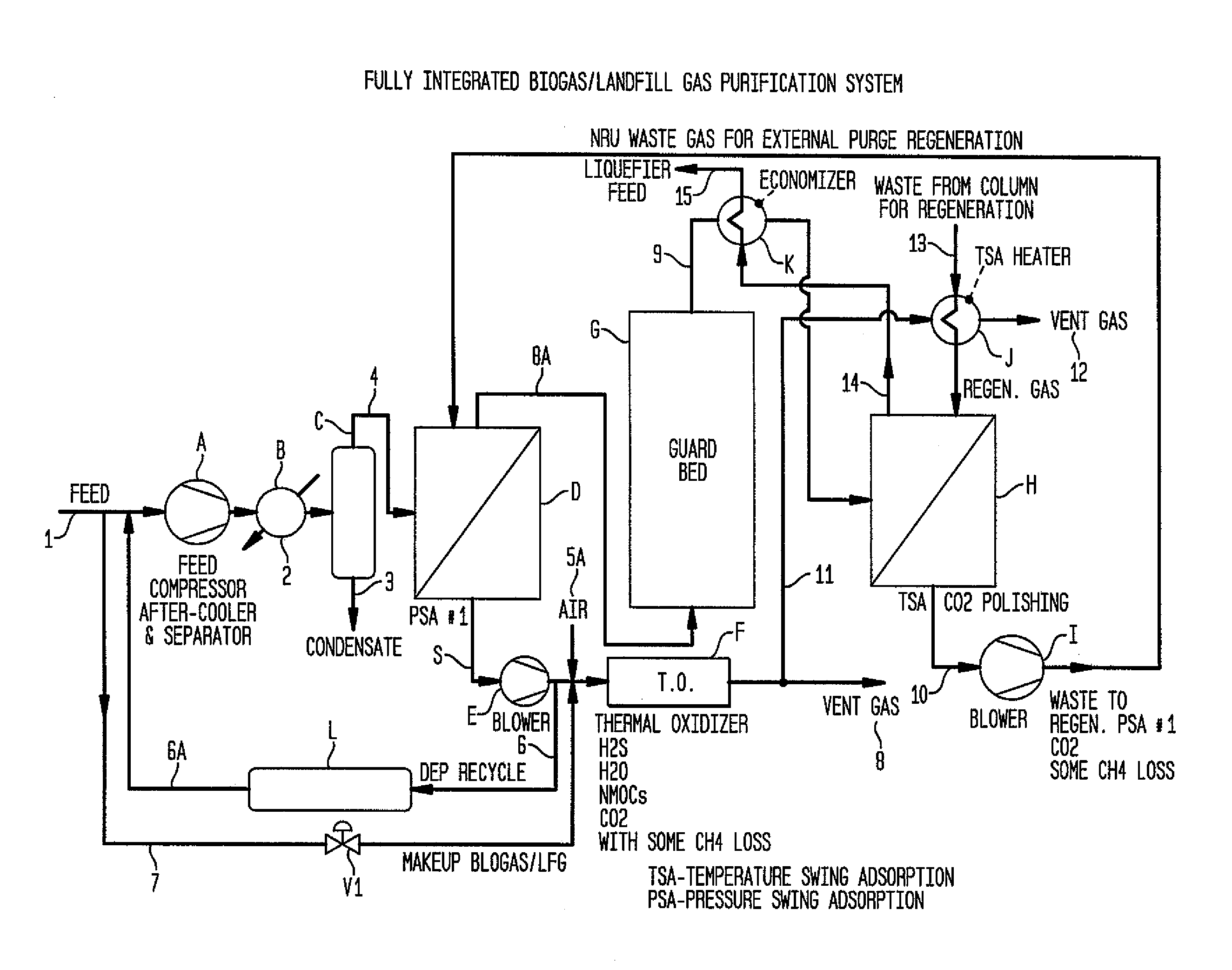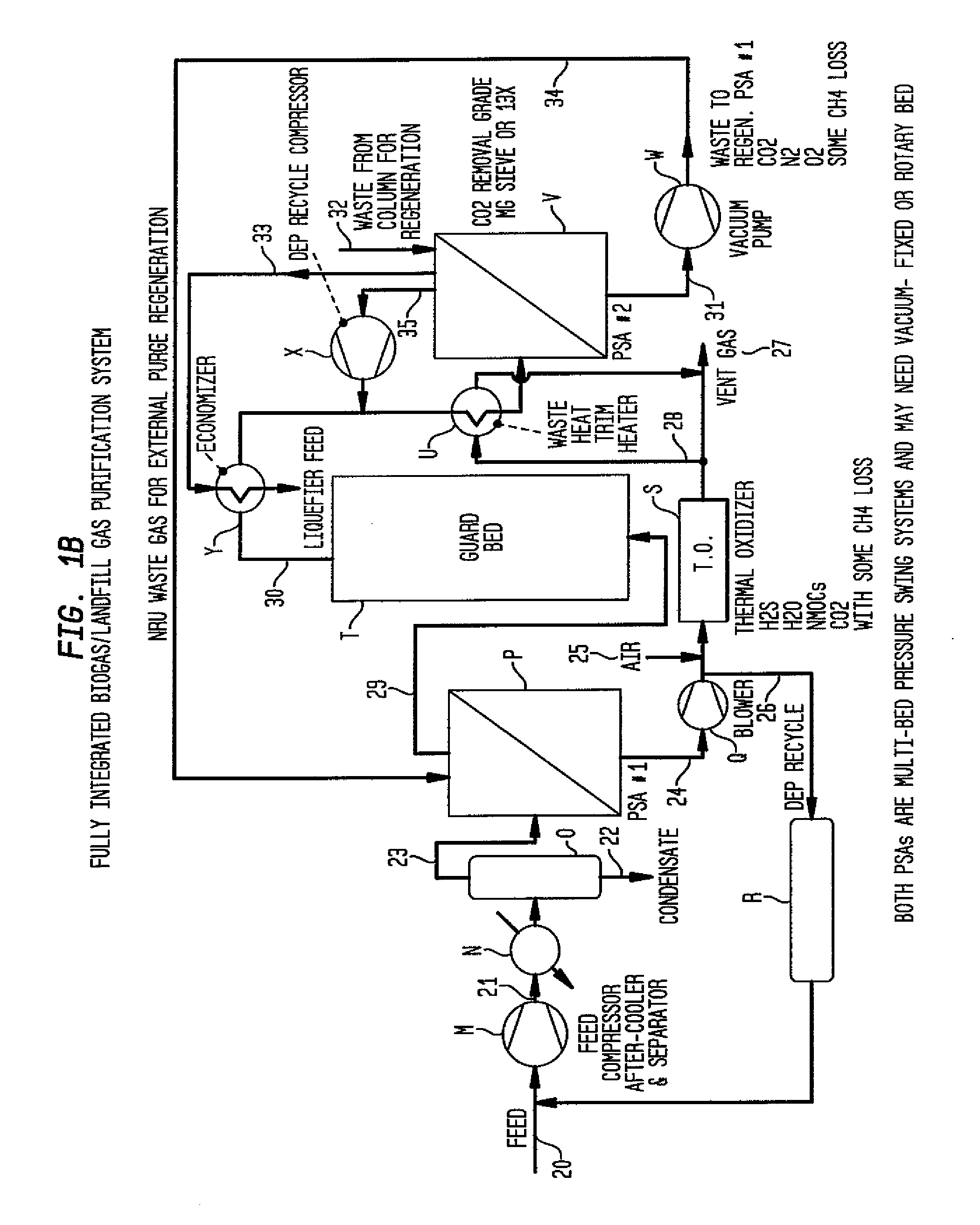Integration of a liquefied natural gas liquefier with the production of liquefied natural gas
a technology of liquefied natural gas and liquefier, which is applied in the direction of liquefaction, lighting and heating apparatus, and separation processes, etc., can solve the problems of high energy requirements for purifying renewable methane, high energy consumption of biogas/landfill gas, and difficult production of alternative fuels from low-grade methane opportunity sources, etc., to achieve the effect of reducing the capital cost of plant construction, reducing net power consumption, and reducing the total
- Summary
- Abstract
- Description
- Claims
- Application Information
AI Technical Summary
Benefits of technology
Problems solved by technology
Method used
Image
Examples
Embodiment Construction
[0025]FIG. 1a is a schematic of a fully integrated biogas / landfill gas purification system according to the invention. Line 1 feeds a biogas or liquefied fuel gas into a feed compressor A which will pressurize the feed gas for entry into the purification system. The compressed feed gas will enter an after-cooler B through line 2 and be fed to a separator C where liquid condensate will be separated from the feed gas stream through line 3 as well as heavier volatile organic compounds (VOCs), dust and other particles. The feed gas stream will leave the separator C through line 4 and be fed to the first pressure swing adsorption unit D.
[0026]The feed gas stream will be separated in the first pressure swing adsorption unit D into a methane gas stream and a stream containing by-products such as hydrogen sulfide, water, carbon dioxide NMOCs and some methane. The pressure swing adsorption unit D contains an adsorbent or adsorbents capable of separating methane from the impurities present in...
PUM
 Login to View More
Login to View More Abstract
Description
Claims
Application Information
 Login to View More
Login to View More - R&D
- Intellectual Property
- Life Sciences
- Materials
- Tech Scout
- Unparalleled Data Quality
- Higher Quality Content
- 60% Fewer Hallucinations
Browse by: Latest US Patents, China's latest patents, Technical Efficacy Thesaurus, Application Domain, Technology Topic, Popular Technical Reports.
© 2025 PatSnap. All rights reserved.Legal|Privacy policy|Modern Slavery Act Transparency Statement|Sitemap|About US| Contact US: help@patsnap.com



